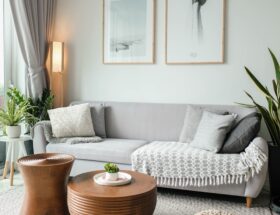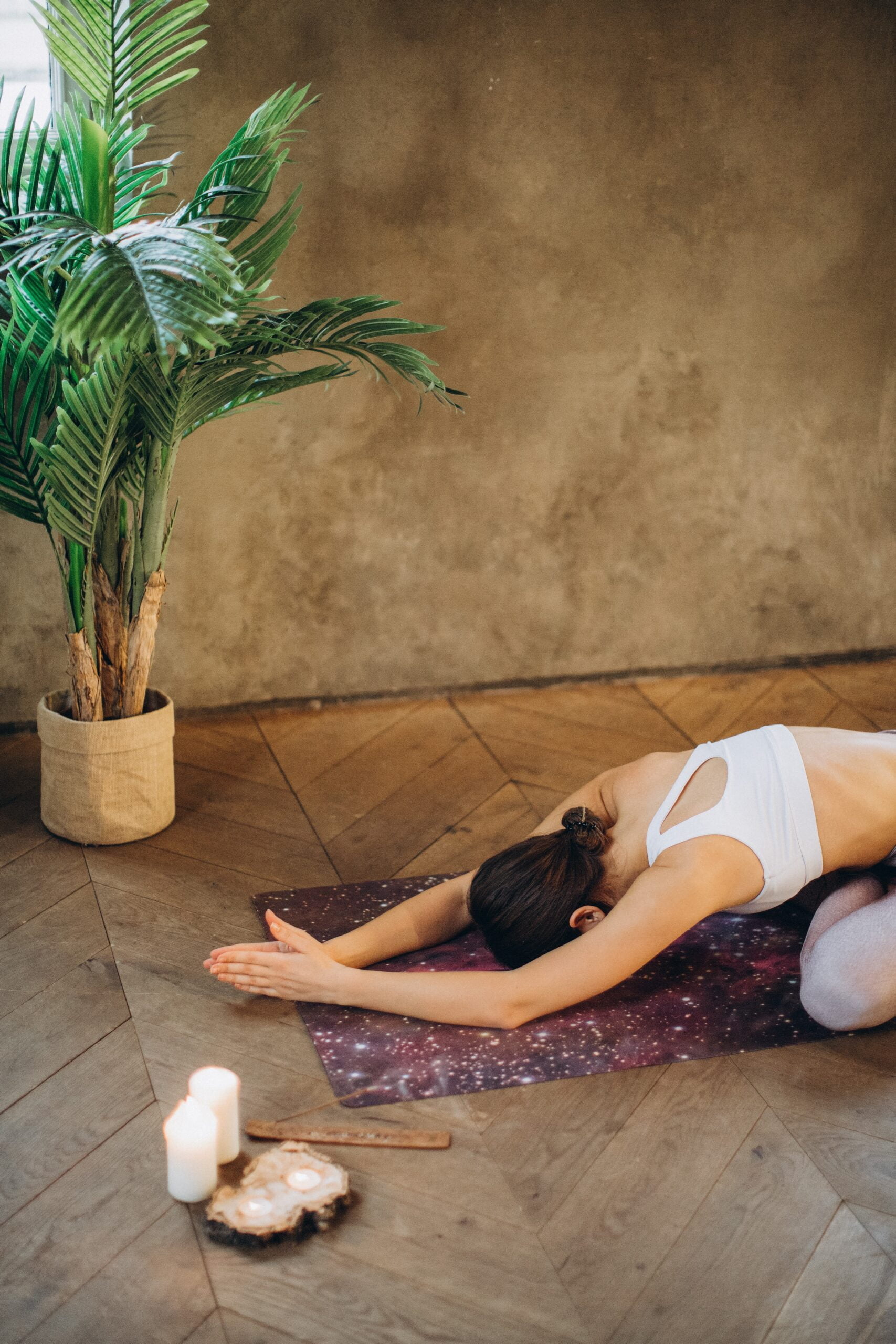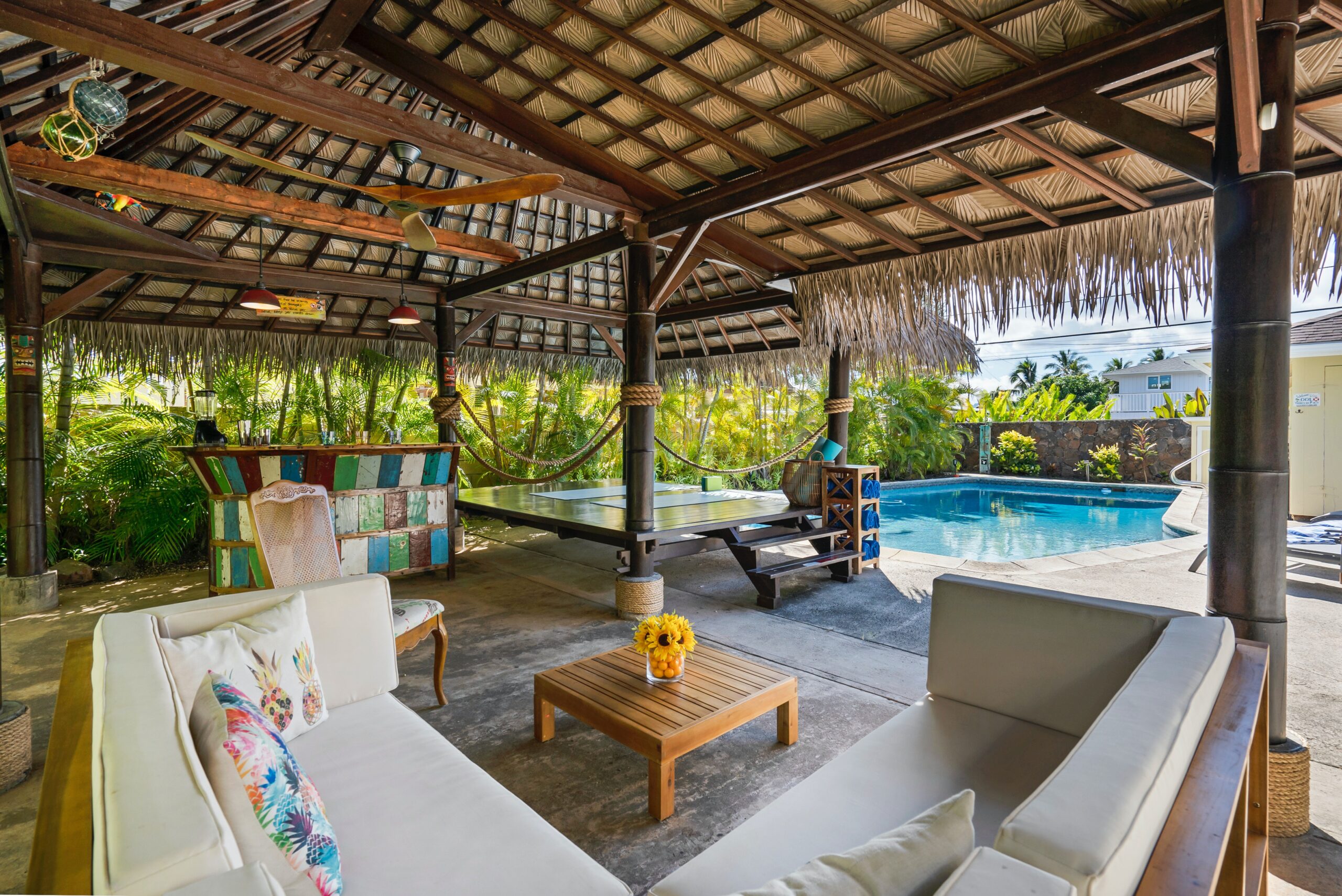When it comes to decorating our homes, color can be a powerful tool for creating the desired mood or atmosphere. In this article, we’re diving into the psychology of colors and how you can choose the perfect paint colors for your home.
Whether you are looking to create a calming atmosphere in your living room, or an energizing one in your bedroom, the colors you choose for the walls and furnishings can make all the difference. Don’t worry, you don’t need to be an artist or an expert to understand this. We’ll break it down in a casual and easy-to-grasp way, so you can confidently wield the power of colors in your own space.

Understanding Color Psychology: The Basics
To start off, let’s get familiar with the basics of color psychology. Colors have the incredible ability to evoke emotions and influence our state of mind. Different colors can have different effects on our mood and energy levels. Here are some common associations:
- Warm Colors:
- Red: Often associated with passion, energy, and stimulation.
- Orange: Known for its warmth, enthusiasm, and creativity.
- Yellow: Brings joy, optimism, and a sense of happiness.
- Cool Colors:
- Blue: Symbolizes calmness, tranquility, and relaxation.
- Green: Represents nature, balance, and harmony.
- Purple: Elicits feelings of luxury, creativity, and spirituality.
- Neutrals:
- White: Signifies purity, simplicity, and a sense of spaciousness.
- Gray: Creates a sophisticated and balanced atmosphere.
- Beige: Provides a warm and inviting backdrop for other colors.
Understanding these general associations can help guide your color choices as you move forward.
Creating a Mood with Paint Colors
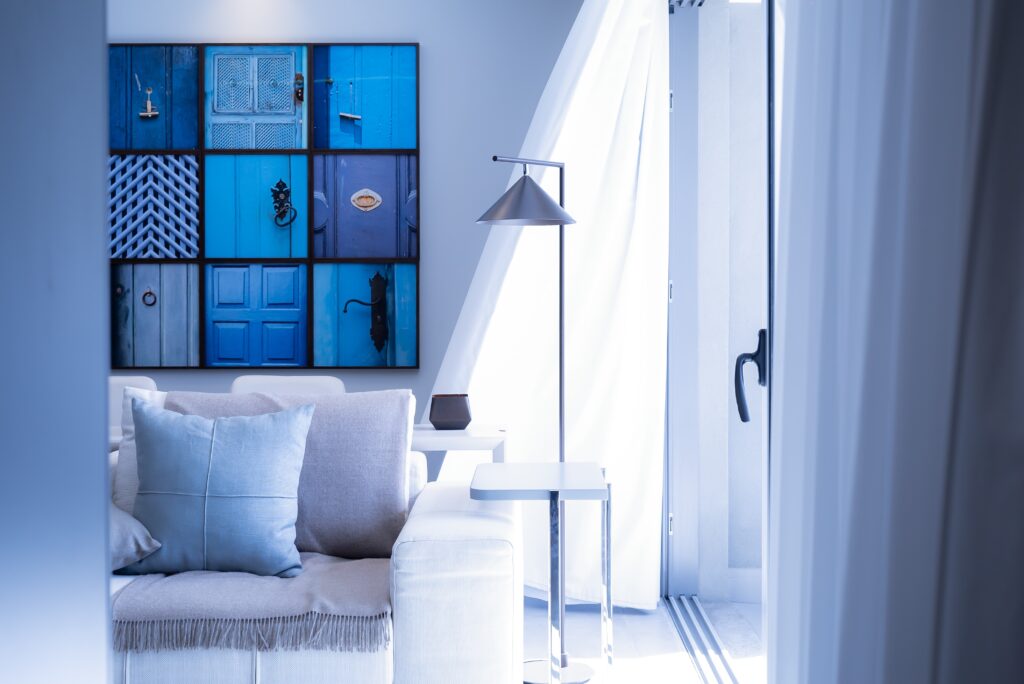
Now that we know the basics, let’s explore how paint colors can create different moods in your home. Depending on the atmosphere you want to establish, you can use colors strategically to set the tone for each room:
- Calm and Relaxing:
- Soft blues and greens can promote serenity and a peaceful environment.
- Pastel shades, like lavender or blush pink, can create a soothing atmosphere.
- Neutrals, such as beige or cream, can lend a sense of tranquility and simplicity.
- Energizing and Invigorating:
- Vibrant yellows and oranges can add a burst of energy and enthusiasm.
- Bright reds and bold purples can create a sense of excitement and liveliness.
- Accents of vibrant colors against a neutral backdrop can inject energy into a space.
- Focus and Productivity:
- Cool blues can enhance focus and concentration, making them ideal for home offices.
- Green hues, reminiscent of nature, can promote a sense of balance and harmony.
- Earthy tones, like browns and warm grays, can create a grounding and focused ambiance.
Remember, there are no hard and fast rules. It’s all about finding the balance and mood that resonates with you and the purpose of each space in your home.
Selecting Paint Colors for Different Rooms

- Living Room:
- Consider creating a cozy and inviting space with warm neutrals and soft blues.
- Add pops of color with accent pillows, artwork, or rugs.
- Bedroom:
- Opt for calming and soothing colors like muted blues or gentle greens.
- Soft pinks or lavenders can also create a serene and restful atmosphere.
- Kitchen and Dining Area:
- Bright and vibrant colors like sunny yellows or lively reds can stimulate appetite.
- Balance bold colors with neutral tones for a harmonious and inviting space.
- Home Office:
- Choose colors that promote focus and productivity, such as cool blues or earthy greens.
- Integrate personal touches and colors that inspire your creativity.
Considering Natural and Artificial Lighting
Lighting can significantly influence how colors appear in your space. Take into account both natural and artificial lighting when choosing your paint color:
- Natural Lighting:
- If your room receives ample natural light, consider cooler tones to balance the brightness.
- Lighter colors can enhance the airy and spacious feel of well-lit rooms.
- Artificial Lighting:
- Warmer tones can counterbalance the coolness of artificial lighting.
- Experiment with different bulbs and light temperatures to find the right ambiance.
Harmonizing Color Schemes
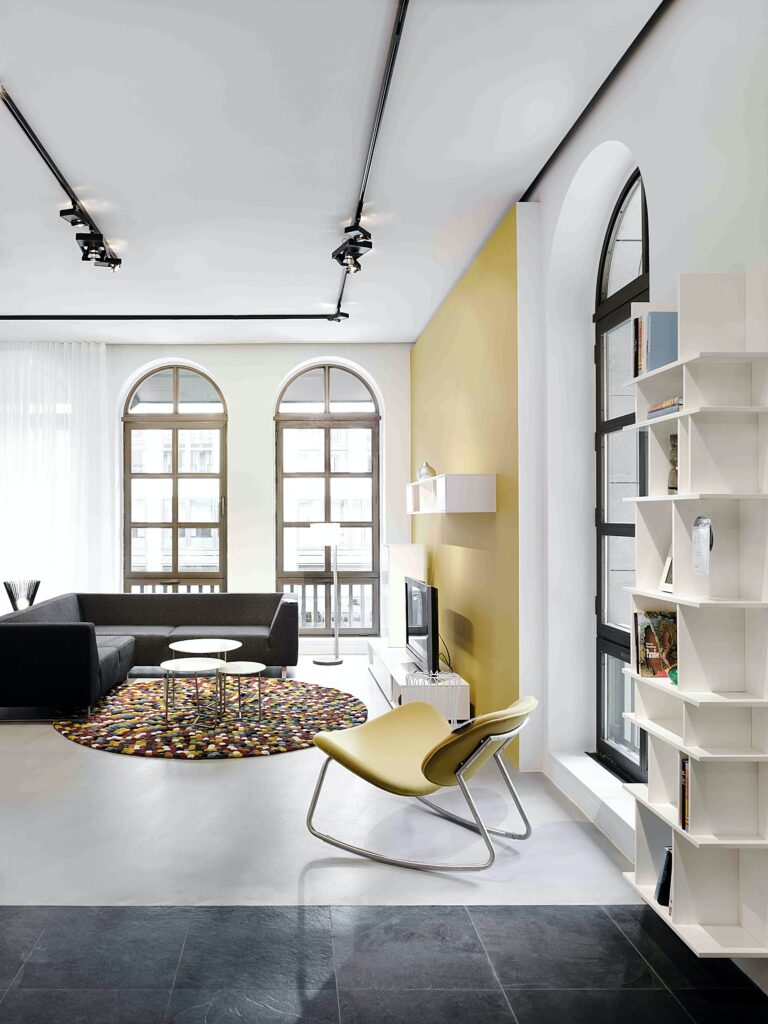
Creating a cohesive flow throughout your home involves harmonizing the paint colors from room to room:
- Color Harmonies:
- Complementary colors: Colors opposite each other on the color wheel (e.g., blue and orange) can create a striking contrast.
- Analogous colors: Colors adjacent to each other (e.g., blue and green) offer a more harmonious and serene effect.
- Monochromatic colors: Variations of a single color can create an elegant and cohesive look.
- Accentuating Focal Points:
- Use color strategically to highlight architectural features or create focal points in your space.
- Consider a bold color on an accent wall or colorful accessories to draw attention.
Personalizing Your Paint Colors
While color psychology offers guidance, it’s essential to incorporate your personal preferences and style:
- Experiment with Accent Colors:
- Add pops of color through accessories, artwork, or textiles to inject personality.
- Don’t be afraid to try bold colors in small doses to add interest and visual appeal.
- Long-Term Satisfaction:
- Consider timeless and versatile paint colors that will stand the test of time.
- Reflect on colors that bring you joy and make you feel comfortable in your space.
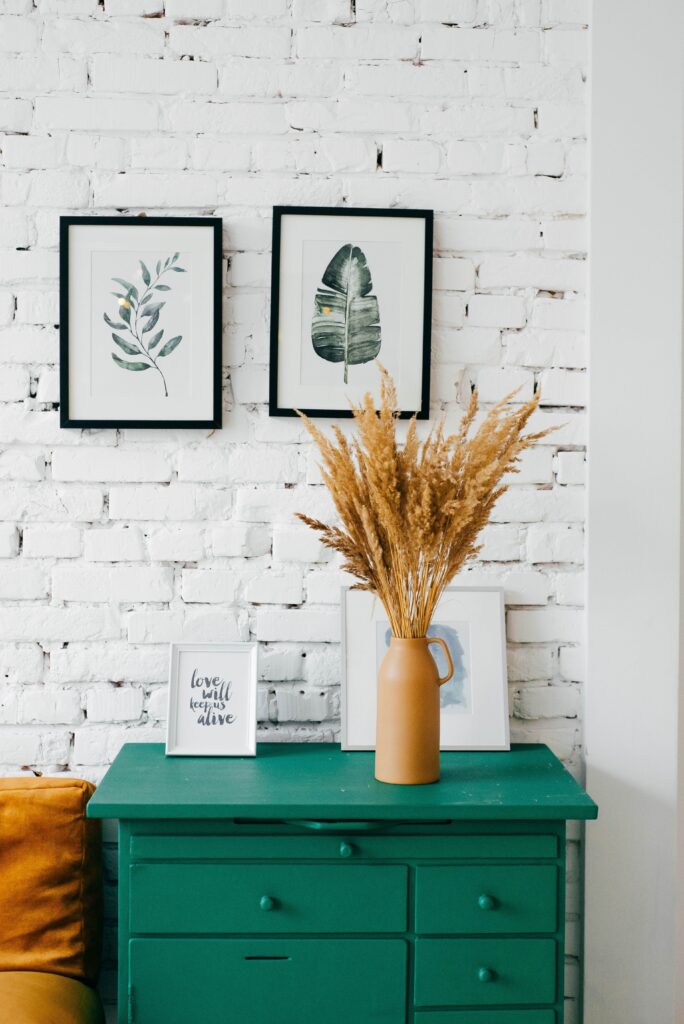
Here are some additional tips for using color psychology in your home:
- Use color to create a focal point: If you want to draw attention to a particular area of your home, use a bold color on the walls, furniture, or accessories.
- Use color to create a sense of space: Lighter colors can make a room feel larger, while darker colors can make a room feel more intimate.
- Use color to create a sense of mood: If you want to create a relaxing atmosphere, use soft, neutral colors. If you want to create a more stimulating atmosphere, use brighter, more vibrant colors.
- Use color to create a sense of style: Your home should reflect your personal style, so don’t be afraid to experiment with different colors and combinations.
Final Thoughts
Color psychology plays an important role in creating the desired atmosphere in your home. Choosing the right paint colors can make a room feel more inviting, calming, or energizing, depending on the mood you want to create. When selecting paint colors, it is important to consider the size and shape of the room, the amount of natural light, and the type of furniture you plan to use. Bright colors such as yellow and orange are ideal for an energizing atmosphere, while cool colors such as blue and green are better suited for a calming atmosphere. Neutral colors such as beige, ivory, and taupe can also be used to create a tranquil atmosphere, and are a great backdrop for vibrant colors



